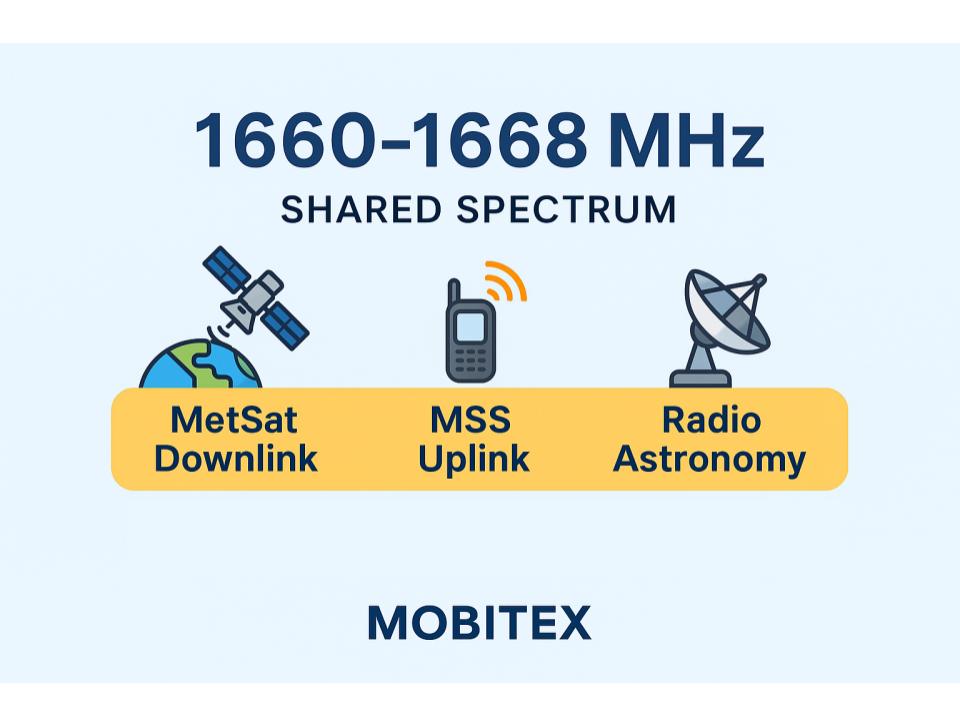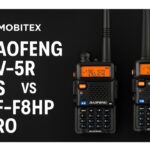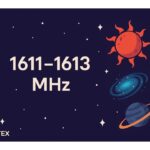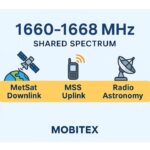The 1660–1668 MHz band sits near the upper edge of the L-band, bridging mobile satellite uplinks and scientific observation frequencies. Despite its narrow width, it plays a critical role in weather data transmission, mobile satellite uplinks, and radio astronomy.
Let’s explore how this slice of spectrum is allocated, who uses it, and why it’s so valuable for both communications and science.
🌍 Band Overview
| Parameter | Details |
|---|---|
| Frequency Range | 1660 MHz – 1668 MHz |
| Band Type | Upper L-Band |
| ITU Service Allocations | Mobile Satellite Service (MSS), Meteorological Satellite (MetSat), Radio Astronomy |
| Typical Wavelength | ~18 cm |
| ITU Regions | Allocated globally (Regions 1, 2, 3) with regional coordination requirements |
This band lies just above the Iridium/Globalstar uplink range (1610–1626.5 MHz) and below the 1.7 GHz meteorological and Earth exploration satellite bands, forming a transition between MSS uplinks and scientific satellite data links.
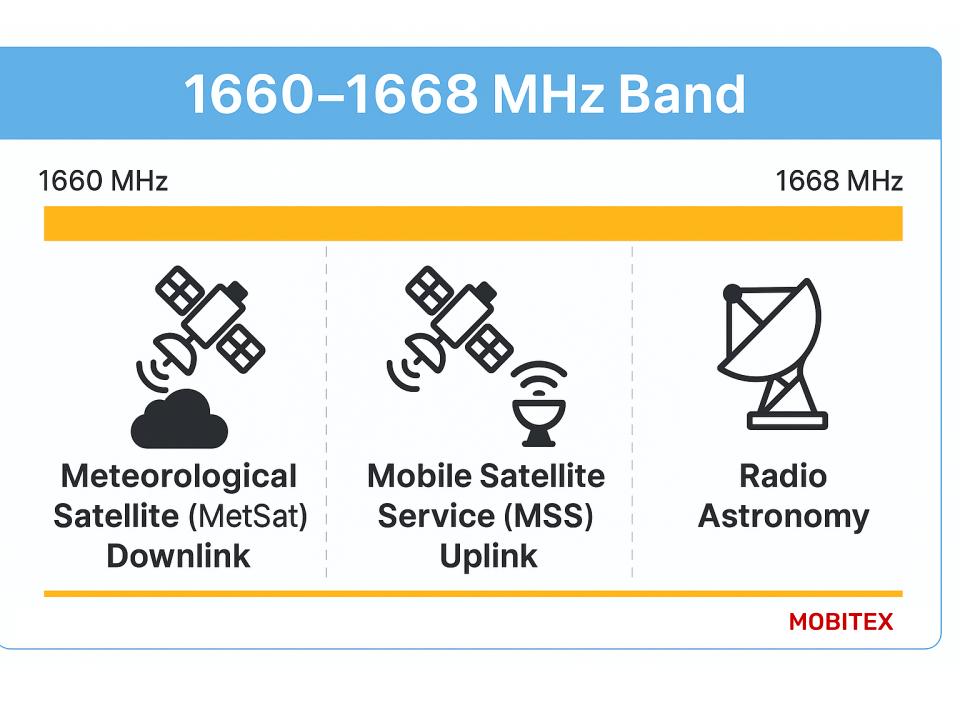
🛰️ Primary Uses
1. Meteorological Satellite (MetSat) Downlinks
The 1660–1668 MHz band supports Earth observation and weather data downlinks, allowing satellites to transmit:
- Temperature, humidity, and cloud profile data
- Atmospheric sounding and imagery
- Weather prediction inputs for systems like NOAA, EUMETSAT, and JMA
Example Systems:
- NOAA GOES (Geostationary Operational Environmental Satellites)
- MetOp (EUMETSAT polar orbiting satellites)
- Himawari (Japan Meteorological Agency)
These satellites send real-time weather and climate data to ground receiving stations, often in the 1665–1668 MHz portion.
2. Mobile Satellite Service (MSS) Uplinks
In parts of this range — especially 1660.5–1668 MHz — the spectrum is allocated to Mobile Satellite Services for:
- Inmarsat, Thuraya, and Ligado uplinks
- Mobile terminals (maritime, aviation, and land-based) transmitting to geostationary satellites
- Coordination with adjacent MSS downlinks in 1.5 GHz bands
This enables satellite phones, tracking systems, and IoT devices to maintain global coverage through L-band uplinks.
3. Radio Astronomy
A key protected sub-band is 1660.6–1668.4 MHz, used for hydroxyl (OH) spectral line observations.
These emissions come from interstellar gas clouds, star-forming regions, and masers (microwave amplification by stimulated emission of radiation) in space.
Why It Matters:
- The OH lines at 1612, 1665, and 1667 MHz help scientists map galactic structure and molecular composition.
- Strict protection zones exist around observatories like Arecibo, Green Bank, and Effelsberg to prevent interference from satellite or terrestrial transmissions.
⚙️ Technical and Regulatory Notes
| Aspect | Details |
|---|---|
| Propagation | Excellent line-of-sight and atmospheric penetration |
| Polarization | Circular (for satellite comms) or linear (for radio astronomy) |
| Channel Bandwidths | 1 MHz typical (MetSat); narrowband (<100 kHz) for astronomy |
| Power Limits | MSS systems tightly regulated to prevent interference |
| Coordination | ITU-R RR 5.379A / 5.379B apply; coordination with radio observatories required |
🌎 Regional Allocations
| ITU Region | Primary Services | Coordination Notes |
|---|---|---|
| Region 1 (Europe, Africa) | MetSat, Radio Astronomy | Shared with MSS under ITU-R 5.379B |
| Region 2 (Americas) | NOAA MetSat, MSS uplink | Coordination with US National Radio Quiet Zone |
| Region 3 (Asia-Pacific) | MetSat (Himawari), MSS | National-level sharing frameworks |
🧩 Adjacent Band Relationships
| Frequency Range (MHz) | Usage |
|---|---|
| 1559–1610 | GNSS (GPS, Galileo, BeiDou) |
| 1610–1626.5 | MSS uplink (Iridium, Globalstar) |
| 1660–1668 | MSS + MetSat + Radio Astronomy |
| 1670–1675 | Meteorological Satellite Downlink |
| 1675–1710 | Meteorological, Earth Exploration, and LTE uplinks (shared) |
The 1660–1668 MHz range thus serves as a bridge between precision satellite navigation and broadband mobile satellite communications, while also hosting critical scientific observation channels.
🔭 Key Scientific Frequency Lines
| Line (MHz) | Molecule / Transition | Use |
|---|---|---|
| 1612.231 | OH (Hydroxyl) | Stellar masers, circumstellar envelopes |
| 1665.402 | OH | Galactic molecular clouds |
| 1667.359 | OH | Star-forming regions, molecular mapping |
These lines fall directly within or adjacent to this band — hence its strict international protection status.
🧾 Summary
| Aspect | 1660–1668 MHz Band Summary |
|---|---|
| Band Range | 1660–1668 MHz |
| Primary Services | Meteorological Satellite, MSS, Radio Astronomy |
| Key Systems | NOAA GOES, EUMETSAT, Inmarsat, OH Maser Observations |
| Propagation | Stable, low-attenuation, all-weather performance |
| Regulation | ITU RR 5.379A/B; coordination required to protect astronomy |
| Scientific Value | OH spectral line observations at 1665–1667 MHz |
